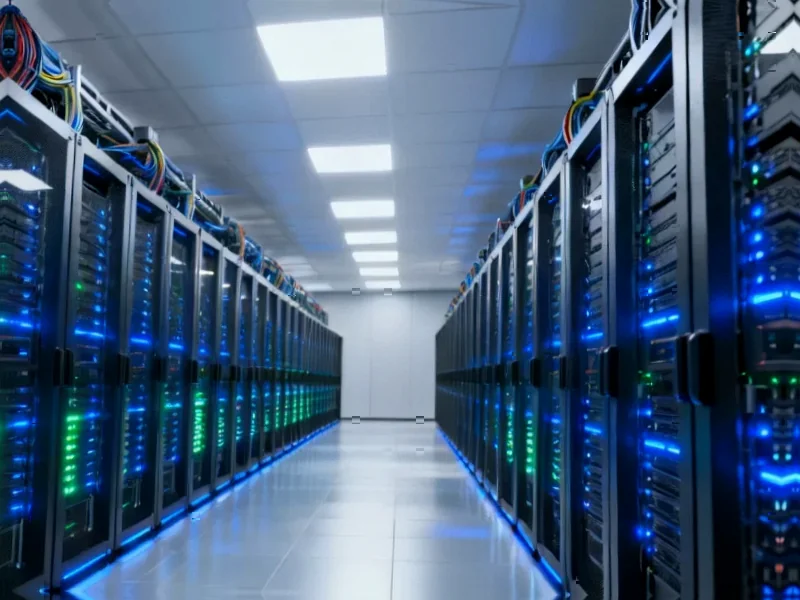According to CNBC, OpenAI has signed a $38 billion compute deal with Amazon Web Services announced on Monday, marking the AI company’s first partnership with a cloud provider beyond Microsoft. Under the agreement, OpenAI will immediately begin running workloads on AWS infrastructure, tapping hundreds of thousands of Nvidia’s graphics processing units in U.S. data centers with plans to expand capacity in coming years. Amazon stock climbed about 5% following the news, with AWS vice president Dave Brown confirming that “some of that capacity is already available, and OpenAI is making use of that.” The initial phase will use existing AWS data centers before Amazon builds additional dedicated infrastructure for OpenAI’s requirements. This landmark partnership signals a strategic diversification in OpenAI’s cloud strategy that warrants deeper technical analysis.
The Technical Architecture Behind the Partnership
This deal represents a fundamental shift in OpenAI’s compute architecture strategy. Previously, Microsoft Azure provided essentially exclusive infrastructure for OpenAI’s training and inference workloads through their deep partnership that included significant investments and custom hardware development. The move to AWS indicates OpenAI is pursuing a multi-cloud strategy to avoid vendor lock-in and ensure redundancy for their massive computational requirements. From a technical perspective, migrating between cloud providers at this scale involves substantial engineering work to adapt to different networking architectures, storage systems, and GPU provisioning models. AWS’s infrastructure relies heavily on their proprietary Nitro System and custom networking stack, which requires significant adaptation compared to Azure’s architecture.
The GPU Scaling Challenge
The mention of “hundreds of thousands of Nvidia’s graphics processing units” reveals the staggering scale of compute required for next-generation AI models. Training models like GPT-4 and beyond requires orchestrating thousands of GPUs to work in concert for weeks or months at a time. The technical challenge isn’t just acquiring the hardware—it’s about networking them together with sufficient bandwidth to prevent bottlenecks. AWS’s strategy of building “completely separate capacity” specifically for OpenAI suggests they’re creating custom clusters with specialized networking like their Elastic Fabric Adapter technology to enable efficient model parallelism across thousands of GPUs. This level of dedicated infrastructure is necessary because standard cloud GPU instances can’t provide the low-latency interconnects needed for training massive models efficiently.
Strategic Implications for the AI Ecosystem
This partnership fundamentally changes the competitive dynamics in the AI infrastructure market. Microsoft’s exclusive relationship with OpenAI gave them a significant advantage in attracting AI workloads to Azure. By partnering with AWS, OpenAI gains leverage in negotiations and ensures they have multiple paths to scale their computational needs. For AWS, this represents a major victory in capturing what is likely the single largest AI compute customer in the world. The deal also signals that even with Microsoft’s substantial investments in OpenAI, the company remains independent enough to make strategic infrastructure decisions based on technical and business needs rather than partnership obligations. This could encourage other AI companies to pursue multi-cloud strategies rather than tying themselves exclusively to a single provider.
Future Capacity Requirements and Market Impact
The phased approach—starting with existing capacity then building additional infrastructure—suggests OpenAI’s compute demands are growing faster than any single provider can accommodate. The $38 billion valuation of this deal indicates OpenAI expects to consume unprecedented amounts of compute over the coming years as they develop more sophisticated models. This level of demand will likely strain the global supply of advanced AI chips and could accelerate investment in alternative AI accelerators beyond Nvidia’s dominance. The partnership also positions AWS to potentially become the infrastructure provider for OpenAI’s rumored video generation models and other compute-intensive applications that require even more resources than current text-based models. As AI models continue to scale, we can expect to see more of these exclusive, massive compute deals that effectively reserve significant portions of global AI infrastructure capacity for single companies.




